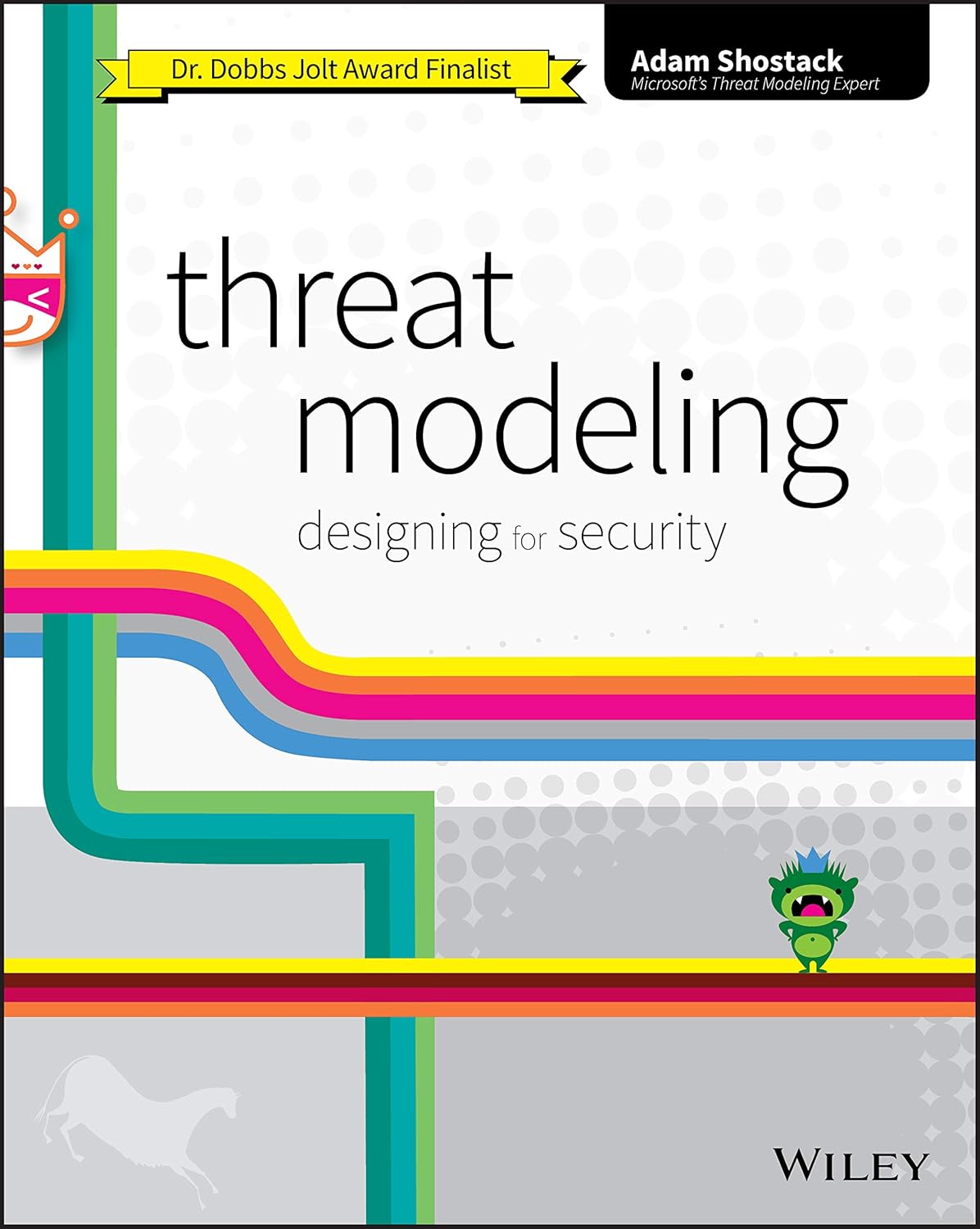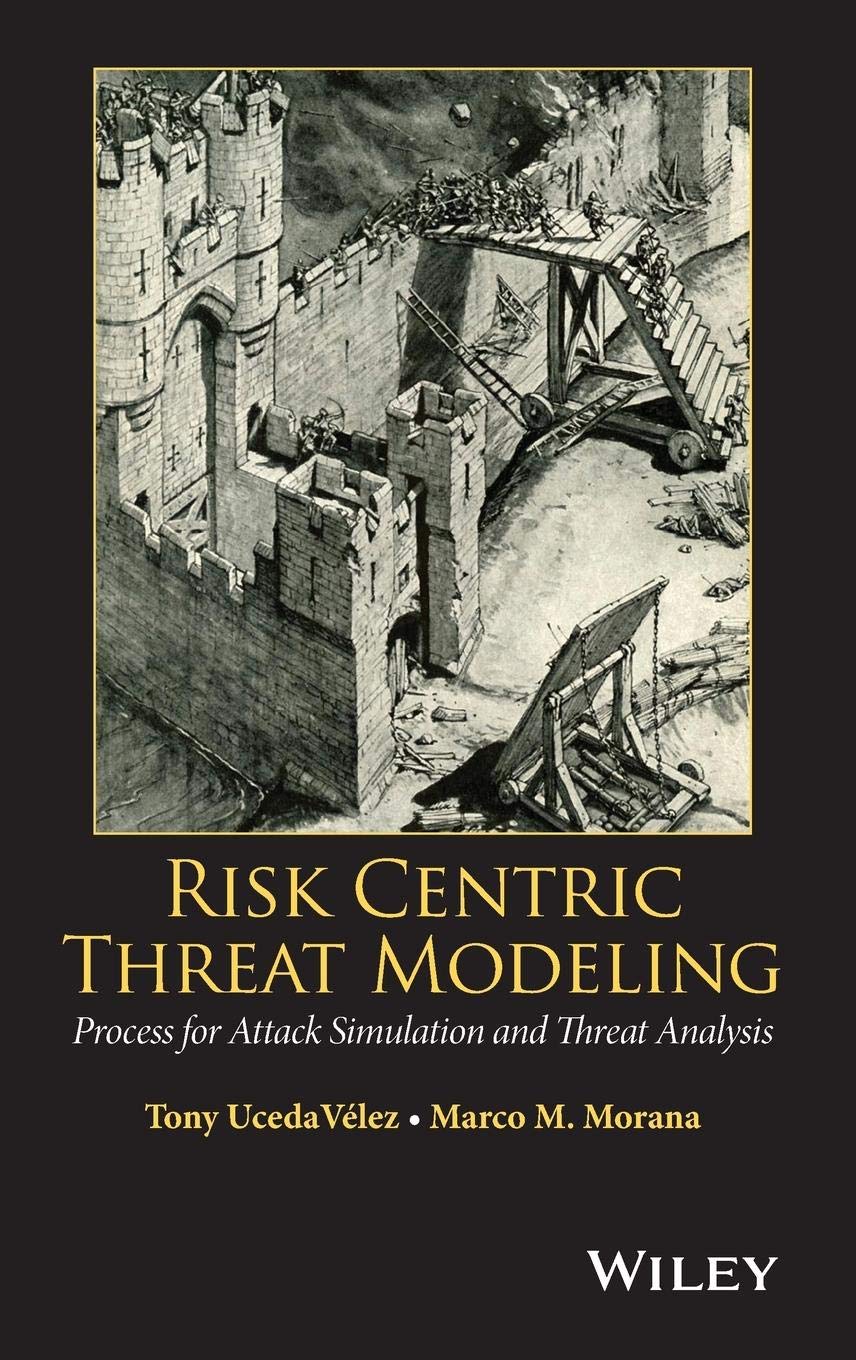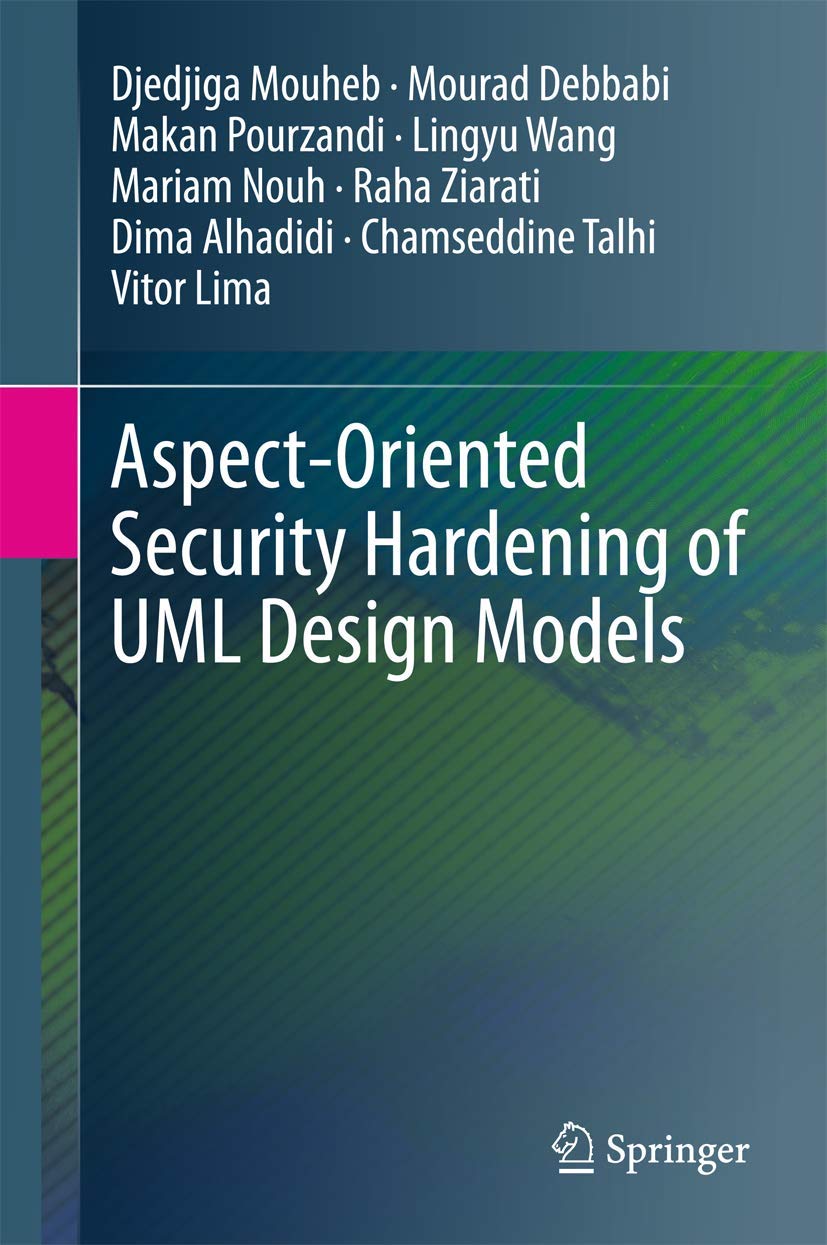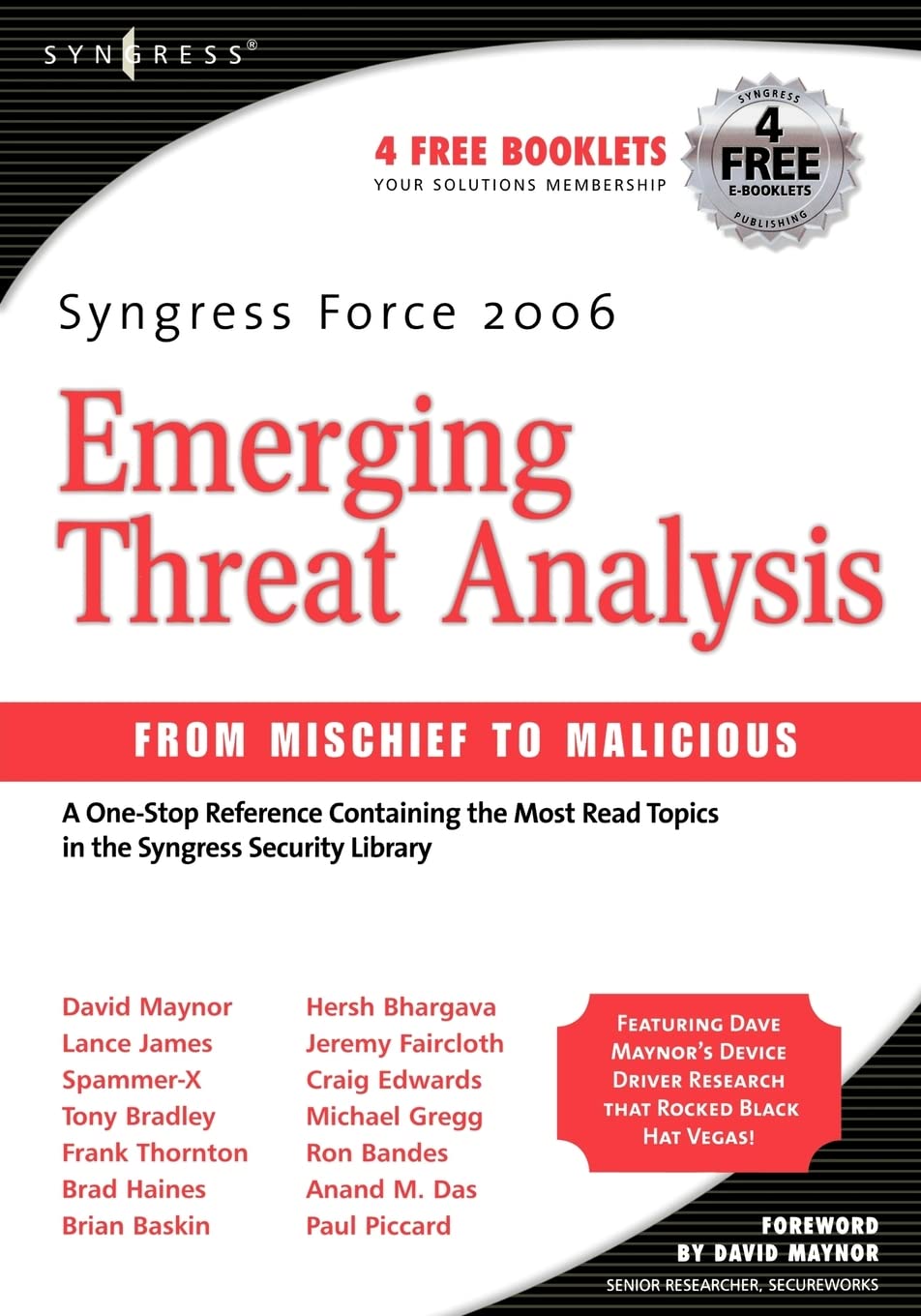As this is a curated collection of books from a personal library, please be mindful that some books may be out of print, have more current editions, or be available in digital formats. A large portion of the books presented are related to research and reference.
Threat Modeling

Adam Shostack is responsible for security development lifecycle threat modeling at Microsoft and is one of a handful of threat modeling experts in the world. Now, he is sharing his considerable expertise into this unique book. With pages of specific actionable advice, he details how to build better security into the design of systems, software, or services from the outset. You'll explore various threat modeling approaches, find out how to test your designs against threats, and learn effective ways to address threats that have been validated at Microsoft and other top companies.Systems security managers, you'll find tools and a framework for structured thinking about what can go wrong. Software developers, you'll appreciate the jargon-free and accessible introduction to this essential skill. Security professionals, you'll learn to discern changing threats and discover the easiest ways to adopt a structured approach to threat modeling.
- Provides a unique how-to for security and software developers who need to design secure products and systems and test their designs
- Explains how to threat model and explores various threat modeling approaches, such as asset-centric, attacker-centric and software-centric
- Provides effective approaches and techniques that have been proven at Microsoft and elsewhere
- Offers actionable how-to advice not tied to any specific software, operating system, or programming language
- Authored by a Microsoft professional who is one of the most prominent threat modeling experts in the world
As more software is delivered on the Internet or operates on Internet-connected devices, the design of secure software is absolutely critical. Make sure you're ready with Threat Modeling: Designing for Security.

This book introduces the Process for Attack Simulation & Threat Analysis (PASTA) threat modeling methodology. It provides an introduction to various types of application threat modeling and introduces a risk-centric methodology aimed at applying security countermeasures that are commensurate to the possible impact that could be sustained from defined threat models, vulnerabilities, weaknesses, and attack patterns. This book describes how to apply application threat modeling as an advanced preventive form of security. The authors discuss the methodologies, tools, and case studies of successful application threat modeling techniques. Chapter 1 provides an overview of threat modeling, while Chapter 2 describes the objectives and benefits of threat modeling. Chapter 3 focuses on existing threat modeling approaches, and Chapter 4 discusses integrating threat modeling within the different types of Software Development Lifecycles (SDLCs). Threat modeling and risk management is the focus of Chapter 5. Chapter 6 and Chapter 7 examine Process for Attack Simulation and Threat Analysis (PASTA). Finally, Chapter 8 shows how to use the PASTA risk-centric threat modeling process to analyze the risks of specific threat agents targeting web applications. This chapter focuses specifically on the web application assets that include customer’s confidential data and business critical functionality that the web application provides.
• Provides a detailed walkthrough of the PASTA methodology alongside software development activities, normally conducted via a standard SDLC process
• Offers precise steps to take when combating threats to businesses
• Examines real-life data breach incidents and lessons for risk management
Risk Centric Threat Modeling: Process for Attack Simulation and Threat Analysis is a resource for software developers, architects, technical risk managers, and seasoned security professionals.

This book comprehensively presents a novel approach to the systematic security hardening of software design models expressed in the standard UML language. It combines model-driven engineering and the aspect-oriented paradigm to integrate security practices into the early phases of the software development process. To this end, a UML profile has been developed for the specification of security hardening aspects on UML diagrams. In addition, a weaving framework, with the underlying theoretical foundations, has been designed for the systematic injection of security aspects into UML models.The work is organized as follows: chapter 1 presents an introduction to software security, model-driven engineering, UML and aspect-oriented technologies. Chapters 2 and 3 provide an overview of UML language and the main concepts of aspect-oriented modeling (AOM) respectively. Chapter 4 explores the area of model-driven architecture with a focus on model transformations. The main approaches that are adopted in the literature for security specification and hardening are presented in chapter 5. After these more general presentations, chapter 6 introduces the AOM profile for security aspects specification. Afterwards, chapter 7 details the design and the implementation of the security weaving framework, including several real-life case studies to illustrate its applicability. Chapter 8 elaborates an operational semantics for the matching/weaving processes in activity diagrams, while chapters 9 and 10 present a denotational semantics for aspect matching and weaving in executable models following a continuation-passing style. Finally, a summary and evaluation of the work presented are provided in chapter 11.The book will benefit researchers in academia and industry as well as students interested in learning about recent research advances in the field of software security engineering.

A One-Stop Reference Containing the Most Read Topics in the Syngress Security LibraryThis Syngress Anthology Helps You Protect Your Enterprise from Tomorrow’s Threats TodayThis is the perfect reference for any IT professional responsible for protecting their enterprise from the next generation of IT security threats. This anthology represents the “best of this year’s top Syngress Security books on the Human, Malware, VoIP, Device Driver, RFID, Phishing, and Spam threats likely to be unleashed in the near future..* From Practical VoIP Security, Thomas Porter, Ph.D. and Director of IT Security for the FIFA 2006 World Cup, writes on threats to VoIP communications systems and makes recommendations on VoIP security.* From Phishing Exposed, Lance James, Chief Technology Officer of Secure Science Corporation, presents the latest information on phishing and spam.* From Combating Spyware in the Enterprise, Brian Baskin, instructor for the annual Department of Defense Cyber Crime Conference, writes on forensic detection and removal of spyware.* Also from Combating Spyware in the Enterprise, About.com’s security expert Tony Bradley covers the transformation of spyware.* From Inside the SPAM Cartel, Spammer-X shows how spam is created and why it works so well.* From Securing IM and P2P Applications for the Enterprise, Paul Piccard, former manager of Internet Security Systems' Global Threat Operations Center, covers Skype security.* Also from Securing IM and P2P Applications for the Enterprise, Craig Edwards, creator of the IRC security software IRC Defender, discusses global IRC security.* From RFID Security, Brad “Renderman Haines, one of the most visible members of the wardriving community, covers tag encoding and tag application attacks.* Also from RFID Security, Frank Thornton, owner of Blackthorn Systems and an expert in wireless networks, discusses management of RFID security.* From Hack the Stack, security expert Michael Gregg covers attacking the people layer.* Bonus coverage includes exclusive material on device driver attacks by Dave Maynor, Senior Researcher at SecureWorks.
Maintained for historical and reference purposes.
As a working cybersecurity professional, every attempt is made to separate professional and personal endeavors in a manner consistent with reducing conflicts of interest and maintaining ethics. Statements contained within this site are the explicit and implicit goals, objectives, endorsements, and educated opinion of the author of this site and not those of current or former employers.

